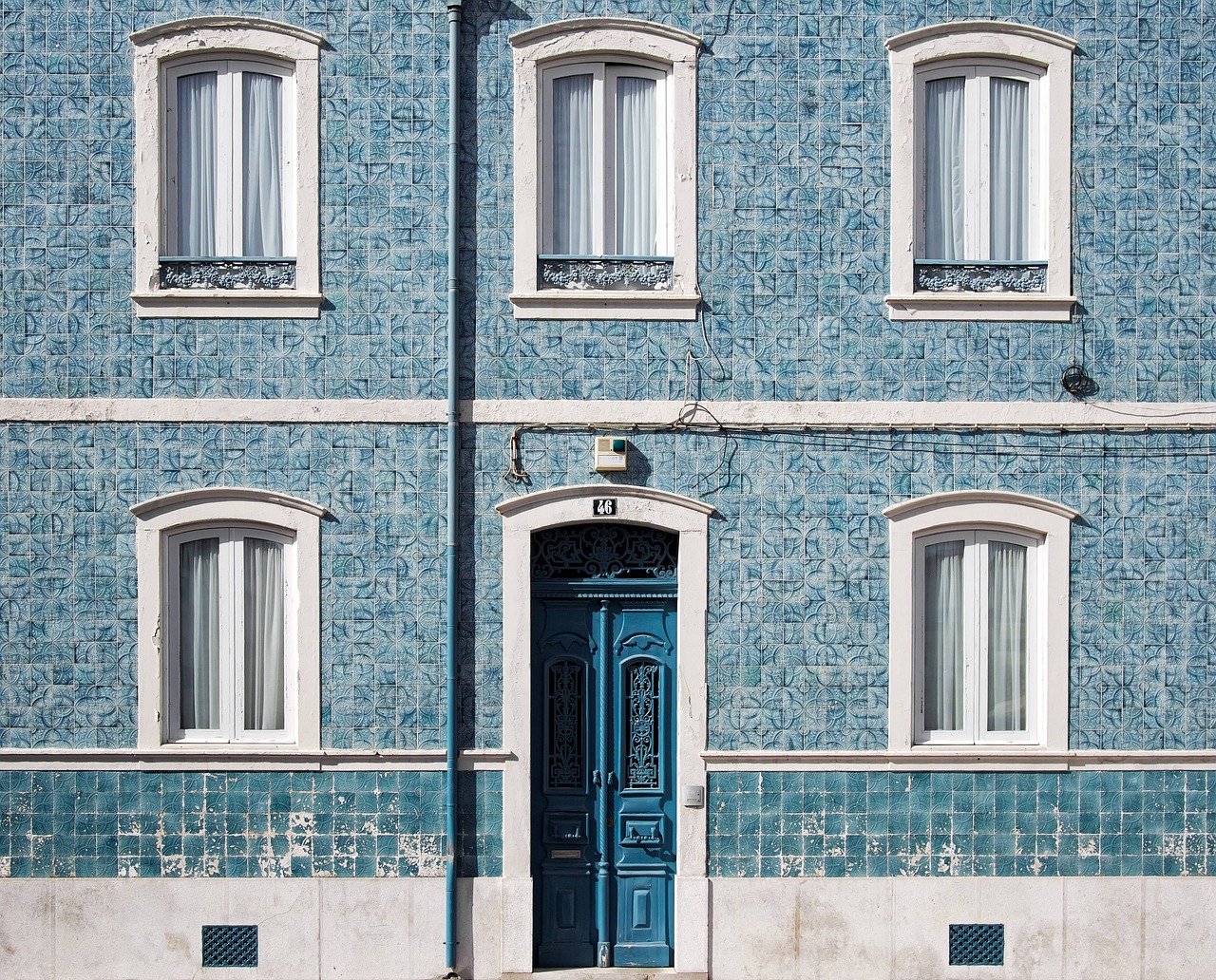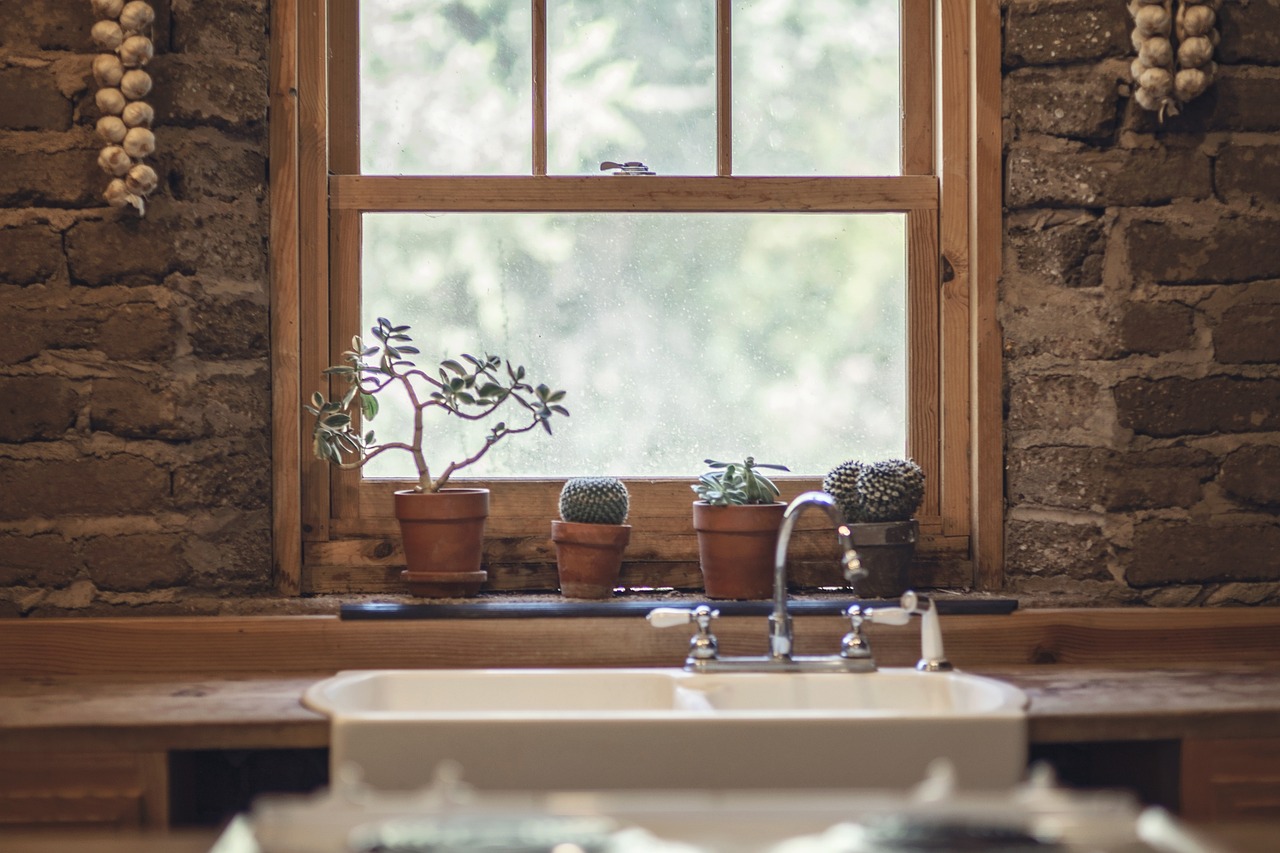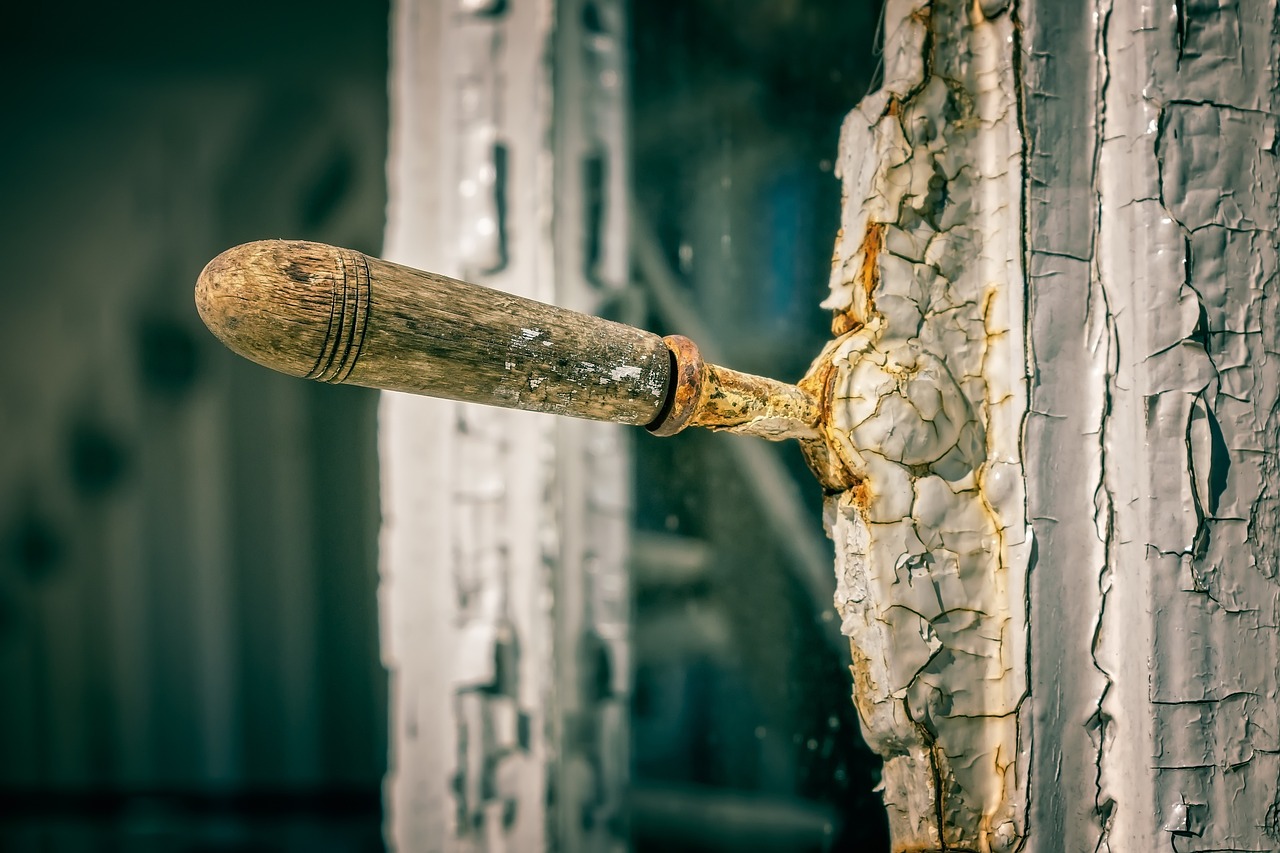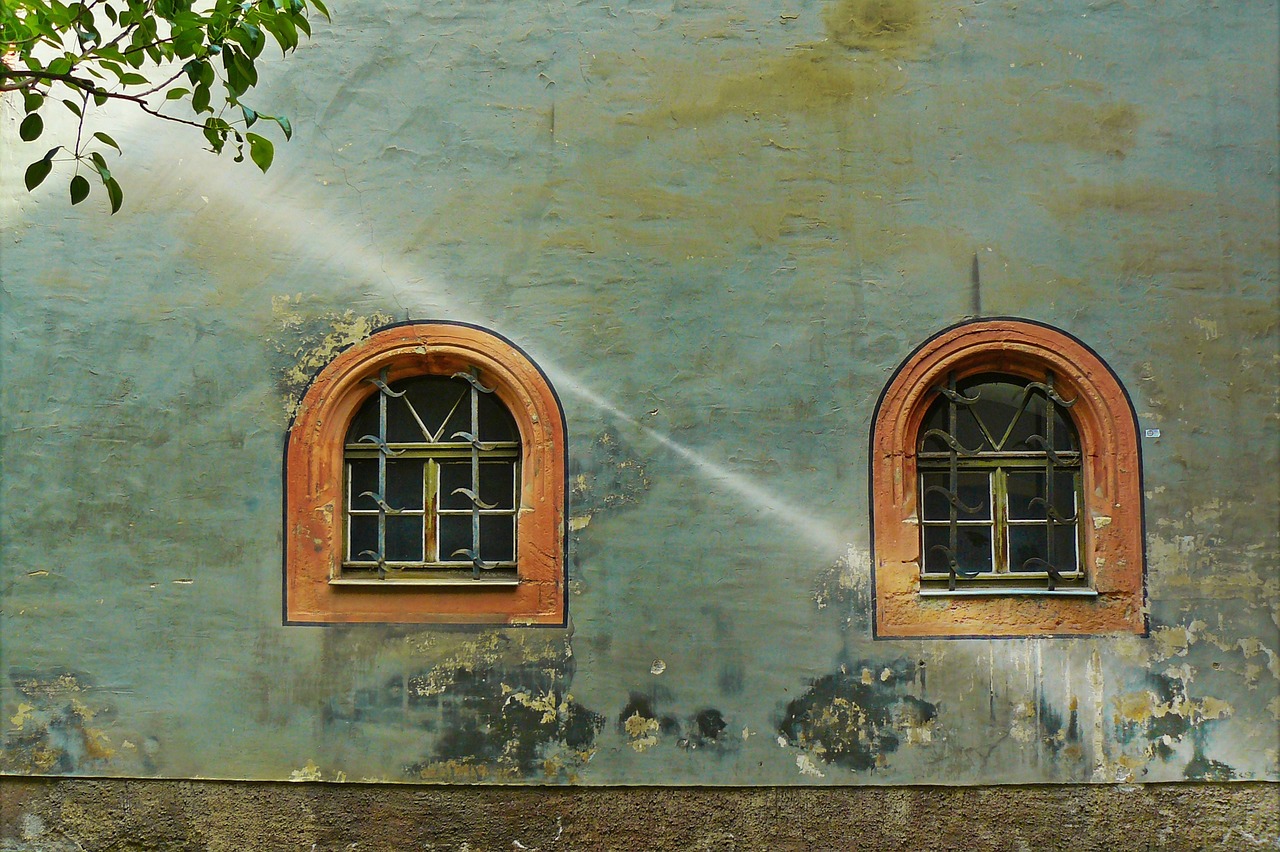Understanding the Construction of Wooden Windows
When it comes to home improvement, one of the most impactful choices you can make is selecting the right windows. Wooden windows are not just an aesthetic choice; they embody a blend of tradition and modernity that can transform your home. In this article, we will explore the various aspects of wooden window construction, including the materials used, the techniques employed, and the benefits they offer. Whether you are a homeowner looking to upgrade your windows or a builder seeking insights into wooden construction, this guide will provide you with valuable information that can help you make informed decisions.
The choice of wood significantly impacts the durability and aesthetics of windows. Common types of wood used in window construction include pine, oak, mahogany, and cedar. Each type of wood has its unique properties that can enhance the overall performance of the window. For instance, pine is often favored for its affordability and ease of work, while mahogany is renowned for its rich color and resistance to decay. Here’s a quick comparison of these woods:
| Type of Wood | Durability | Aesthetic Appeal | Cost |
|---|---|---|---|
| Pine | Moderate | Light color, can be stained | Low |
| Oak | High | Rich grain, strong | Moderate |
| Mahogany | Very High | Deep color, elegant | High |
| Cedar | High | Warm tone, aromatic | Moderate |
Choosing the right wood can significantly enhance the longevity and visual appeal of your windows. As you select your materials, consider not only the appearance but also how well the wood can withstand environmental challenges such as moisture and temperature changes.
Understanding the various construction techniques used in wooden windows is crucial for ensuring their performance and longevity. Traditional methods, such as handcrafting, offer a unique charm and character, while modern advancements in technology can enhance precision and efficiency. It's fascinating how these techniques have evolved over time, yet the fundamental principles remain rooted in craftsmanship.
Joinery is a vital aspect of wooden window construction, directly influencing the strength and stability of the window frame. There are several joinery techniques, each with its own benefits:
- Mortise and Tenon Joints: Renowned for their strength and durability.
- Dovetail Joints: Offer both strength and visual appeal.
Mortise and tenon joints are crafted by fitting a protruding tenon into a mortise hole cut into another piece of wood. This method is favored in high-quality wooden window construction due to its ability to withstand stress and provide a solid connection. The craftsmanship involved in creating these joints often showcases the skill of the carpenter, resulting in windows that not only perform well but also look stunning.
Dovetail joints are another excellent choice for wooden windows. They consist of interlocking pieces that resemble a dove's tail, providing exceptional strength and resistance to pulling apart. Beyond their structural benefits, dovetail joints add a touch of elegance, making them a popular choice for homeowners who appreciate fine craftsmanship.
Finishing is essential for protecting wooden windows from environmental factors such as moisture, UV rays, and temperature fluctuations. Various techniques, including staining and sealing, can ensure longevity while maintaining aesthetics. A well-finished wooden window not only enhances the beauty of your home but also extends the lifespan of the materials used. Regular maintenance, such as reapplying finishes every few years, can keep your windows looking fresh and new.
Wooden windows offer numerous advantages that make them a popular choice among homeowners. From energy efficiency to aesthetic appeal, these windows can significantly enhance the value and comfort of your home.
One of the standout features of wooden windows is their excellent insulation properties. Wooden frames can help maintain a stable indoor temperature, reducing the need for excessive heating or cooling. This not only contributes to a more comfortable living environment but also leads to significant savings on energy bills over time. Think of wooden windows as a cozy blanket that wraps around your home, keeping the warmth in during winter and the cool air in during summer.
The natural beauty of wood adds a unique charm to any home. Wooden windows can be customized to fit different architectural styles, allowing homeowners to create a cohesive look that complements their property. Whether you prefer a rustic cabin vibe or a sleek modern design, wooden windows can be tailored to meet your aesthetic desires. They are like the finishing touch on a beautiful painting, enhancing the overall masterpiece that is your home.
Q: How long do wooden windows last?
A: With proper maintenance, wooden windows can last for decades, often outliving their vinyl counterparts.
Q: Are wooden windows energy-efficient?
A: Yes, wooden windows provide excellent insulation, helping to reduce energy costs.
Q: Do wooden windows require a lot of maintenance?
A: While they do require more maintenance than vinyl windows, regular upkeep can keep them in great condition for years.

Materials Used in Wooden Windows
The choice of wood is a pivotal factor when it comes to the construction of wooden windows. Not only does it impact the durability of the windows, but it also plays a significant role in their overall aesthetic appeal. Different types of wood come with unique properties, making some more suitable than others depending on the specific requirements of a project. For instance, hardwoods like oak and mahogany are renowned for their strength and longevity, while softwoods such as pine and cedar are often chosen for their affordability and ease of work. Understanding these materials can help homeowners and builders alike make informed decisions.
When selecting wood for window construction, it's essential to consider factors such as climate, maintenance, and budget. For example, in humid environments, wood species that resist moisture, like redwood or cypress, may be preferred. On the other hand, if you're looking for a more cost-effective solution for a less demanding climate, pine might be the perfect choice. Here’s a quick comparison of some common types of wood used in window construction:
| Type of Wood | Durability | Aesthetic Appeal | Cost |
|---|---|---|---|
| Oak | High | Rich grain | Expensive |
| Mahogany | Very High | Deep color | Very Expensive |
| Pine | Moderate | Light color | Affordable |
| Cedar | High | Warm tones | Moderate |
| Redwood | High | Rich color | Moderate to High |
Another crucial aspect to consider is the treatment of the wood. Untreated wood is vulnerable to a host of issues, including rot, insect damage, and warping. Therefore, many manufacturers apply protective coatings or treatments to enhance the wood's longevity and performance. This not only extends the life of the windows but also minimizes the need for frequent maintenance, saving homeowners both time and money in the long run.
In conclusion, the materials used in wooden windows are not just about aesthetics; they are about creating a balance between functionality and style. By selecting the right type of wood and ensuring it is properly treated, homeowners can enjoy beautiful, durable windows that stand the test of time.
- What type of wood is best for wooden windows?
It depends on your specific needs, but hardwoods like oak and mahogany are excellent for durability, while softwoods like pine are more budget-friendly.
- How can I maintain my wooden windows?
Regularly check for signs of wear and tear, and ensure they are properly sealed and painted to protect against moisture.
- Are wooden windows energy-efficient?
Yes, wooden windows can provide excellent insulation, helping to reduce energy costs.

Construction Techniques
When it comes to constructing wooden windows, understanding the various techniques involved is paramount. Each method not only affects the overall appearance of the window but also its durability and performance. Over the years, traditional methods have evolved, and modern advancements have introduced innovative approaches that enhance the quality of wooden windows. Let's dive deeper into these construction techniques, exploring how they work and what makes them effective.
One of the most notable aspects of wooden window construction is the joinery methods employed. These techniques are crucial for ensuring that the window frames are not only sturdy but also aesthetically pleasing. The strength of a window frame often lies in its joints, and different joinery techniques can offer various benefits. For instance, traditional methods like mortise and tenon joints have been used for centuries, celebrated for their strength and reliability. On the other hand, dovetail joints, known for their unique interlocking design, provide both stability and visual appeal. Understanding these joinery methods allows homeowners and builders to make informed choices about the type of windows that best suit their needs.
Joinery is more than just a technical term; it's the backbone of wooden window construction. The way pieces of wood are joined together can significantly impact the window's strength and longevity. Let's explore some of the most common joinery techniques used in wooden window construction:
- Mortise and Tenon Joints: This classic technique involves creating a cavity (mortise) in one piece of wood and a corresponding projection (tenon) on another. When fitted together, they create a strong bond that can withstand the test of time.
- Dovetail Joints: Renowned for their distinctive shape, dovetail joints are not only strong but also visually appealing. They are often used in window sashes, providing a tight fit that enhances durability.
These joinery methods contribute significantly to the overall strength and stability of the window frame. They ensure that as the wood expands and contracts with changing temperatures, the joints remain tight and secure, preventing drafts and leaks.
Mortise and tenon joints are a hallmark of quality craftsmanship in wooden window construction. This method is favored for its exceptional strength and reliability. The process involves cutting a rectangular hole in one piece of wood (the mortise) and a corresponding protrusion on another piece (the tenon). When these two pieces are joined, they create a robust connection that can support the weight and stress placed on the window frame. This technique is particularly beneficial for larger windows, where stability is crucial.
Dovetail joints are an excellent choice for those who appreciate both strength and aesthetics. The interlocking design of dovetail joints not only provides a secure connection but also adds a decorative element to the window. This type of joinery is often used in the construction of window sashes, where the visual appeal is just as important as the structural integrity. Dovetail joints are particularly effective in resisting pulling forces, making them ideal for windows that experience significant movement due to changes in temperature and humidity.
In addition to joinery methods, finishing techniques also play a vital role in the construction of wooden windows. The right finish can protect the wood from environmental factors such as moisture, UV rays, and temperature fluctuations. Techniques like staining and sealing not only enhance the natural beauty of the wood but also ensure its longevity, making wooden windows a worthwhile investment for any homeowner.
Ultimately, the construction techniques used in wooden windows can make a significant difference in their overall performance and lifespan. By understanding the various methods available, homeowners and builders can select the best options to meet their needs, ensuring that their windows are not only beautiful but also built to last.
Q: What are the main advantages of wooden windows compared to other materials?
A: Wooden windows offer superior insulation, aesthetic appeal, and the ability to be customized to fit various architectural styles, making them a popular choice among homeowners.
Q: How can I maintain my wooden windows to ensure their longevity?
A: Regular maintenance includes cleaning, inspecting for damage, and applying protective finishes such as paint or sealant to guard against moisture and UV damage.
Q: Are wooden windows energy efficient?
A: Yes, wooden windows provide excellent insulation, helping to maintain indoor temperatures and reduce energy costs over time.

Joinery Methods
When it comes to the construction of wooden windows, play a pivotal role in determining both the strength and aesthetic appeal of the final product. Joinery can be thought of as the backbone of wooden window construction; it’s where the magic happens! The way pieces of wood are joined together not only affects the structural integrity but also the overall appearance of the window. In this section, we’ll explore some of the most common joinery methods used in wooden window construction, highlighting their benefits and how they contribute to the durability and longevity of your windows.
One of the most celebrated joinery techniques is the mortise and tenon joint. This method involves creating a cavity (the mortise) in one piece of wood, which is then fitted with a projecting piece (the tenon) from another. This joint is renowned for its strength and stability, making it a popular choice for high-quality wooden windows. The precision involved in crafting these joints ensures that the window frame can withstand the test of time and the elements. Imagine a sturdy bridge; the mortise and tenon joint is like the solid foundation that keeps everything in place.
Another noteworthy technique is the dovetail joint. Often appreciated for its aesthetic appeal as much as its strength, the dovetail joint features interlocking pieces that create a beautiful and robust connection. This type of joint is particularly effective in resisting pulling forces, making it ideal for window frames that need to endure various stresses over time. You could compare it to a well-fitted puzzle piece; it not only fits perfectly but also enhances the overall beauty of the structure. Dovetail joints are especially favored in traditional wooden windows, where craftsmanship and detail are paramount.
In addition to these methods, modern advancements in joinery have introduced techniques that combine traditional craftsmanship with contemporary technology. For instance, CNC (Computer Numerical Control) machines allow for precise cuts and fittings, ensuring that every joint is perfect. This blend of old and new not only enhances the performance of wooden windows but also makes the construction process more efficient.
Ultimately, the choice of joinery method can have a significant impact on the performance of wooden windows. Whether you lean towards the classic mortise and tenon or the visually striking dovetail joint, understanding these techniques can help you make informed decisions when selecting or constructing wooden windows. It's essential to consider not just the aesthetics but also how these joinery methods will hold up over time, ensuring that your windows remain beautiful and functional for years to come.
- What is the best wood for wooden windows? The best wood for wooden windows includes species like oak, pine, and mahogany due to their durability and aesthetic qualities.
- How often should wooden windows be maintained? Wooden windows should be inspected and maintained at least once a year to prevent damage from weather and pests.
- Can I paint or stain my wooden windows? Yes, you can paint or stain wooden windows to match your home’s exterior, but it's important to use products designed for outdoor use to ensure longevity.

Mortise and Tenon Joints
When it comes to the construction of wooden windows, stand out as a hallmark of craftsmanship and durability. These joints have been used for centuries, and their popularity hasn’t waned because they offer a unique combination of strength and stability that is hard to match. So, what exactly are these joints? In simple terms, a mortise is a cavity cut into one piece of wood, while a tenon is a projection on the end of another piece that fits snugly into the mortise. This interlocking mechanism creates a robust connection that can withstand both the test of time and the elements.
One of the most significant advantages of using mortise and tenon joints in wooden window construction is their ability to create a solid frame. Unlike other types of joints that may rely on adhesives or fasteners, mortise and tenon joints are mechanically strong, which means they can handle stress without compromising the integrity of the window. This is especially important in areas with extreme weather conditions, where windows are subjected to wind, rain, and temperature fluctuations.
Moreover, the craftsmanship involved in creating these joints adds an aesthetic appeal that many homeowners appreciate. The precision required to cut mortises and tenons allows for clean lines and a seamless finish, enhancing the overall look of the window. This is why many high-quality wooden windows feature this traditional joinery method, making them not just functional but also visually striking.
Let’s take a closer look at some of the benefits of mortise and tenon joints:
- Durability: These joints are incredibly strong and can last for generations when properly maintained.
- Resistance to Movement: Mortise and tenon joints prevent the wood from warping and shifting, which is essential for maintaining window functionality.
- Versatility: They can be used in various types of wooden structures, not just windows, making them a versatile choice for builders.
In conclusion, mortise and tenon joints are not just a construction technique; they represent a commitment to quality and longevity in wooden window manufacturing. By choosing windows that utilize this joinery method, homeowners can enjoy the peace of mind that comes with knowing their investment is built to last. Whether you’re a builder or a homeowner, understanding the significance of these joints can help you make informed decisions that enhance the beauty and functionality of your living space.
Here are some common questions regarding mortise and tenon joints in wooden windows:
- What materials are best for mortise and tenon joints? Typically, hardwoods like oak, maple, and cherry are preferred due to their strength and durability.
- Can mortise and tenon joints be repaired? Yes, they can be repaired, but it requires skill to ensure the integrity of the joint is maintained.
- Are mortise and tenon joints more expensive? While they may cost more due to the craftsmanship involved, the long-term benefits often outweigh the initial investment.

Dovetail Joints
Dovetail joints are a hallmark of quality craftsmanship in wooden window construction. Renowned for their strength and aesthetic appeal, these joints are often likened to a puzzle piece that fits perfectly, providing not only a secure connection but also an elegant finish. The interlocking design of dovetail joints ensures that the wood pieces are held together tightly, making them less likely to warp or separate over time. This is particularly important in areas where windows are subject to temperature fluctuations and moisture, as the integrity of the joint can significantly influence the longevity of the window itself.
Crafting dovetail joints requires precision and skill, often involving a series of angled cuts that create a series of tails and pins. When fitted together, these elements create a robust joint that is both functional and visually appealing. The beauty of dovetail joints lies in their ability to be showcased; many craftsmen choose to leave the joint visible as a testament to their skill and the quality of the materials used. In fact, the sight of a well-executed dovetail joint can evoke a sense of admiration and appreciation for traditional woodworking techniques.
One of the key advantages of using dovetail joints in wooden windows is their ability to withstand lateral forces, making them ideal for frames that need to endure the stresses of daily use. Unlike simpler joints, which may weaken over time, dovetail joints distribute stress evenly across the joint, enhancing the overall stability of the window frame. This characteristic makes them particularly desirable in high-quality wooden windows where durability is a priority.
Moreover, dovetail joints can be customized in various ways to suit different design preferences. Homeowners and builders can choose from a variety of wood species, finishes, and even joint configurations to create a unique look that complements the architectural style of the home. Whether it’s a classic colonial design or a modern minimalist aesthetic, dovetail joints can be adapted to enhance the visual appeal of any wooden window.
In summary, dovetail joints are more than just a method of assembly; they represent a fusion of strength, beauty, and craftsmanship that elevates wooden windows to a higher standard. Their ability to provide a reliable and attractive connection between wood pieces makes them a favored choice among builders and homeowners alike. By investing in windows that feature dovetail joints, you are not only ensuring a durable product but also adding a touch of elegance to your home.
- What are the benefits of using dovetail joints in wooden windows?
Dovetail joints offer superior strength, aesthetic appeal, and durability, making them ideal for high-quality wooden window construction. - Can dovetail joints be customized?
Yes, dovetail joints can be tailored to fit various wood species and design preferences, allowing for a unique look in wooden windows. - How do dovetail joints compare to other types of joints?
Dovetail joints provide better resistance to lateral forces and are less likely to weaken over time compared to simpler joints.

Finishing Techniques
When it comes to wooden windows, play a crucial role in ensuring their longevity and aesthetic appeal. Just like a painter adds the final touches to a masterpiece, the right finish can elevate the beauty of wooden windows while providing essential protection against the elements. Without proper finishing, even the most beautifully crafted window frames can succumb to moisture, UV rays, and the inevitable wear and tear of time.
There are several finishing techniques available, each with its own unique benefits. For instance, staining allows homeowners to enhance the natural grain of the wood, adding depth and richness to its appearance. This technique not only beautifies the wood but also helps to seal it against moisture. On the other hand, sealing is equally important, as it creates a barrier to protect the wood from water damage and insect infestations. When combined, staining and sealing can provide a robust defense against environmental factors while maintaining the window's charm.
Moreover, the choice of finish can also affect the window's energy efficiency. High-quality finishes can help insulate the wood, reducing heat transfer and contributing to a more comfortable living environment. This is particularly important in regions with extreme weather conditions, where temperature fluctuations can put additional stress on window materials.
Another aspect to consider is the application method. There are various ways to apply finishes, such as brushing, spraying, or rolling. Each method has its own advantages and can produce different results. For instance, spraying can provide a smooth, even coat that is less likely to show brush strokes, while brushing allows for more control and precision in hard-to-reach areas. Homeowners should choose the method that best suits their skill level and the specific needs of their windows.
To summarize, the finishing techniques for wooden windows are not just about aesthetics; they are vital for protecting your investment. Here’s a quick overview of some popular finishing techniques:
| Finishing Technique | Benefits |
|---|---|
| Staining | Enhances natural grain, adds color, and provides moisture protection. |
| Sealing | Creates a barrier against moisture and insects, prolonging the lifespan of the wood. |
| Painting | Offers a wide range of colors, provides additional weather resistance. |
| Varnishing | Adds a glossy finish, protects against UV rays and scratches. |
Ultimately, the right finishing technique can transform your wooden windows from ordinary to extraordinary, ensuring they not only look stunning but also stand the test of time. So, when planning your wooden window project, don’t overlook the importance of finishing – it’s the cherry on top of your beautiful creation!
Q: How often should I refinish my wooden windows?
A: It typically depends on the climate and the quality of the finish used. Generally, you should consider refinishing every 3 to 5 years, but inspect your windows regularly for any signs of wear.
Q: Can I use any type of paint or stain on wooden windows?
A: It’s best to use products specifically designed for exterior wood surfaces. These products are formulated to withstand weather conditions and provide better protection.
Q: Do I need to sand my windows before applying a new finish?
A: Yes, sanding is recommended to remove the old finish and create a smooth surface for the new coat. This helps the new finish adhere better and ensures a more even application.

Benefits of Wooden Windows
When it comes to choosing the right windows for your home, wooden windows stand out for a multitude of reasons. Not only do they provide a classic aesthetic that can elevate the overall look of your property, but they also offer a range of practical benefits that make them a smart investment. One of the most compelling advantages of wooden windows is their energy efficiency. Wooden frames naturally insulate your home, helping to maintain a comfortable temperature year-round. This insulation reduces the need for excessive heating in the winter and cooling in the summer, which can lead to significant savings on energy bills.
Moreover, the durability of wooden windows should not be underestimated. With proper maintenance, they can last for decades, resisting wear and tear better than many synthetic alternatives. This longevity means fewer replacements and repairs, which in turn saves you money and hassle in the long run. To put it simply, investing in high-quality wooden windows is like investing in a reliable friend; they’ll be there for you for years to come.
In addition to energy efficiency and durability, wooden windows also bring a unique aesthetic appeal that can’t be replicated with other materials. The warmth and richness of wood create a welcoming atmosphere that instantly makes a house feel like a home. Plus, wooden windows can be customized to fit various architectural styles, from traditional to modern. Whether you prefer a rustic look or something sleek and contemporary, wooden windows can be tailored to meet your vision.
Furthermore, wooden windows are environmentally friendly. Wood is a renewable resource, and when sourced sustainably, it has a lower carbon footprint compared to vinyl or aluminum windows. Choosing wooden windows can be a statement of your commitment to eco-friendliness and sustainability. It’s a choice that not only benefits your home but also the planet.
Lastly, let’s not forget the value addition that wooden windows can bring to your property. Homes with wooden windows are often seen as more desirable, which can enhance your home’s market value. If you ever decide to sell, potential buyers may be willing to pay a premium for the charm and quality that wooden windows offer. So, while the initial investment might be higher, the return on investment can be substantial.
In conclusion, the benefits of wooden windows are numerous and varied. They are energy-efficient, durable, aesthetically pleasing, environmentally friendly, and can increase your home's value. If you’re in the market for new windows, considering wooden options might just be the best decision you make for your home.
- Are wooden windows more expensive than other types? Yes, they typically have a higher upfront cost, but their longevity and energy efficiency can offset this over time.
- How do I maintain wooden windows? Regular painting or staining, along with sealing, can protect them from the elements and extend their lifespan.
- Can wooden windows be customized? Absolutely! Wooden windows can be crafted to fit various styles and sizes, making them a versatile choice for any home.
- Are wooden windows energy efficient? Yes, wooden windows provide excellent insulation, helping to reduce energy costs.

Energy Efficiency
When it comes to energy efficiency, wooden windows stand out as a champion in the world of home construction. Why, you ask? Well, it all boils down to the natural insulating properties of wood. Unlike other materials, wood has a unique ability to trap air within its cellular structure, creating a barrier that helps keep your home warm in the winter and cool in the summer. This means less reliance on heating and cooling systems, which can lead to significant savings on energy bills. Imagine your home as a cozy blanket, wrapping you in comfort regardless of the season!
But that's not all. Wooden windows are not just about insulation; they also play a crucial role in reducing drafts. Drafts can be a homeowner's worst nightmare, sneaking in through poorly sealed windows and driving up energy costs. High-quality wooden windows, when properly constructed and installed, provide a snug fit that minimizes air leakage. This is especially important in older homes where traditional windows may have settled or warped over time. By investing in new wooden windows, you can effectively seal your home against unwanted air infiltration.
Furthermore, the energy efficiency of wooden windows can be enhanced through various glazing options. Double or triple glazing, for instance, can significantly improve thermal performance. These windows are designed with multiple layers of glass separated by insulating gas, which adds another layer of protection against temperature fluctuations. When combined with the natural insulation of wood, this creates a powerhouse of energy efficiency that not only keeps your home comfortable but also reduces your carbon footprint.
To illustrate the impact of wooden windows on energy efficiency, consider the following table that compares the average energy savings of wooden windows versus other materials:
| Window Material | Average Energy Savings (%) |
|---|---|
| Wooden Windows | 25-30% |
| Vinyl Windows | 15-20% |
| Aluminum Windows | 10-15% |
As you can see, wooden windows not only outperform other materials in terms of energy savings but also provide a sustainable option for environmentally conscious homeowners. Choosing wooden windows is like planting a tree; it benefits both your home and the planet. It's an investment that pays off in comfort, aesthetics, and financial savings over time.
In conclusion, if you're looking to improve your home's energy efficiency, wooden windows are a fantastic choice. They combine natural insulation, effective sealing, and customizable glazing options to create a comfortable living environment while saving you money. So, the next time you think about upgrading your windows, remember the warmth and efficiency that wood can bring to your home.
- Are wooden windows more expensive than other materials?
While the initial cost may be higher, the long-term savings on energy bills and maintenance can offset the price difference.
- How often do wooden windows need maintenance?
With proper care, wooden windows can last for decades. Regular inspections and maintenance every few years are recommended.
- Can wooden windows be customized?
Absolutely! Wooden windows can be tailored to match any architectural style, offering a wide range of design options.

Aesthetic Appeal
When it comes to enhancing the visual charm of your home, wooden windows are truly a game changer. Imagine walking into a room bathed in natural light, where the warm hues of wood complement your decor and create an inviting atmosphere. It's not just about functionality; it’s about creating a space that feels alive and welcoming. The natural beauty of wood can elevate any architectural style, from rustic cabins to modern homes, making it a versatile choice for homeowners.
One of the standout features of wooden windows is their customizability. Homeowners can choose from a variety of wood types, finishes, and colors to match their personal style and the overall aesthetic of their home. Whether you prefer the rich tones of mahogany, the light and airy feel of pine, or the rustic charm of reclaimed wood, there’s a perfect option for you. Additionally, wooden windows can be crafted into various shapes and styles, such as casement, double-hung, or bay windows, allowing for a unique look that reflects your personality.
Moreover, wooden windows can be further enhanced with decorative elements such as grilles or mullions, which not only add character but also provide a sense of architectural authenticity. These features can create a timeless elegance that synthetic materials often struggle to replicate. Picture your home adorned with beautifully crafted wooden windows, each frame telling a story of craftsmanship and care, creating a striking first impression for guests and passersby alike.
To illustrate the impact of wooden windows on home aesthetics, consider the following table that compares wooden windows with other materials:
| Material | Aesthetic Appeal | Customization Options | Longevity |
|---|---|---|---|
| Wood | Warm, natural beauty | High (various finishes, shapes) | High (with proper maintenance) |
| Vinyl | Limited, often synthetic look | Moderate (fewer colors/finishes) | Moderate (may fade over time) |
| Aluminum | Sleek, modern but cold | Low (limited styles) | High (durable but less warmth) |
In conclusion, the of wooden windows goes beyond mere looks; they contribute to the overall character and warmth of your home. Their ability to blend seamlessly with various architectural styles, coupled with the myriad of customization options, makes them an excellent choice for anyone looking to enhance their living space. So, why settle for ordinary when you can have extraordinary? Wooden windows not only beautify your home but also create a lasting impression that resonates with visitors and reflects your unique taste.
- What types of wood are best for windows? Common choices include pine, oak, and mahogany, each offering unique aesthetics and durability.
- How do I maintain wooden windows? Regular cleaning, sealing, and painting or staining every few years help maintain their beauty and longevity.
- Are wooden windows energy-efficient? Yes, wooden windows provide excellent insulation, which can help reduce heating and cooling costs.
- Can I customize my wooden windows? Absolutely! Wooden windows can be tailored in terms of size, shape, and finish to match your home’s style.
Frequently Asked Questions
- What types of wood are commonly used in wooden windows?
Wooden windows can be made from a variety of woods, but some of the most popular choices include pine, oak, mahogany, and cedar. Each type of wood has its own unique properties, such as durability, resistance to decay, and aesthetic appeal, which can greatly influence the overall performance and look of your windows.
- How do construction techniques affect the quality of wooden windows?
The construction techniques used in wooden windows play a crucial role in their strength and longevity. Traditional methods, like mortise and tenon joints and dovetail joints, provide superior structural integrity compared to modern alternatives. Understanding these techniques can help homeowners choose windows that will last for years.
- What are the benefits of choosing wooden windows over other materials?
Wooden windows offer several benefits, including energy efficiency and aesthetic appeal. They provide excellent insulation, helping to reduce heating and cooling costs. Additionally, the natural beauty of wood can enhance the charm of any home, allowing for customization to fit different architectural styles.
- How can I maintain my wooden windows to ensure their longevity?
Regular maintenance is key to keeping wooden windows in top condition. This includes cleaning the frames, checking for rot or damage, and applying protective finishes like stains or sealants. By taking these steps, you can protect your windows from environmental factors and maintain their appearance for years to come.
- Are wooden windows energy-efficient?
Absolutely! Wooden windows are known for their excellent insulation properties. They can help keep your home warm in the winter and cool in the summer, significantly reducing your energy bills over time. Investing in high-quality wooden windows is not just an aesthetic choice; it’s a smart financial decision.
- Can I customize wooden windows to match my home’s style?
Yes, one of the best features of wooden windows is their versatility. They can be easily customized in terms of size, shape, and finish to match the unique style of your home. Whether you prefer a classic look or a modern design, wooden windows can be tailored to enhance your home’s aesthetic.



















